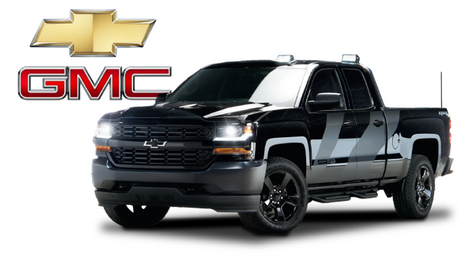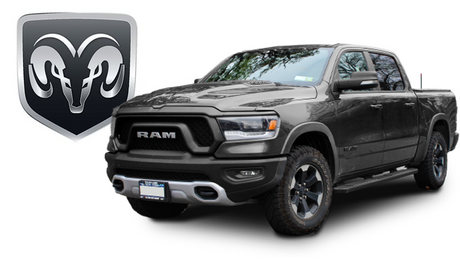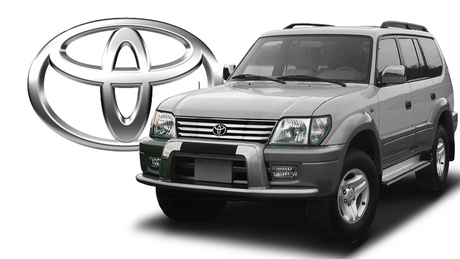So, you've wrestled your CB radio into the dashboard and you’ve got your antenna mounted on a space with decent ground plane. Everything is connected and ready to go, right? Wrong. It’s vital that you tune your antenna before using your new CB radio. If you’re not familiar with the concept behind SWR or the necessity of adjusting it, let us give you fair warning: improper tuning of your antenna has the potential to cause much worse damage than a weak broadcast signal – it can end the life of your radio before you get a chance to enjoy it.
The good news is that this article will walk you through the process of properly tuning your antenna (a.k.a., adjusting the SWR). It’s not a terribly difficult process, as long as you follow the directions and are patient enough for a little trial-and-error. Assuming that everything else in your system is properly installed, the only additional equipment necessary is a short length of coaxial cable (known as a jumper lead), an SWR meter, and something on which to record your readings.
- The first thing you need to do is find a suitable location to park your vehicle. There should be no obstructions, such as trees or buildings, within 30 to 50 feet (or about 10 to 15 meters) of your antenna. Neither you nor your buddies should be hanging out around the car either. Make sure that you’re inside with the doors and windows closed to ensure an accurate reading.
- The next step is to hook up the SWR meter. First, disconnect the coaxial cable from the back of the radio. Reconnect this end of the cable, which is going to the antenna, to the SWR meter in the connector marked “antenna” or “ANT.” Next, use the jumper lead to connect your radio and the SWR meter through the connection marked “transmitter” or “XMIT.”
- Now you are ready to measure the SWR on a few different channels. Remember: throughout this process it's important to keep the microphone the same distance from the meter for each test.
- Set the switch on the SWR meter to “FWD.”
- Turn the radio to channel 1.
- Key the microphone (depress the button and hold it).
- Turn the knob on the SWR meter labeled “SET” or “ADJUST” until the needle reaches the setting position at the end of its range.
- While still keying the microphone, flip the switch on the SWR meter to the “REF” or “SWR” position.
- Quickly record the reading given by your SWR meter and release the transmit key on your microphone.
- You are now going to repeat this process for channel 40. Follow steps 4 through 9.
The objective behind tuning your antenna is to make these two readings as close as possible. Getting down to a 1.5:1 ratio or below makes for a passable broadcast signal. There are two basic points to understand before adjusting the length of your antenna:
- If the SWR on channel 40 is higher than that on channel 1, your antenna is too long.
- If the SWR on channel 1 is higher than that on channel 40, your antenna is too short.
If your antenna is too long, it is necessary to reduce its physical length. There are several methods for shortening an antenna, which vary by manufacturer. Consult your owner’s manual for detailed instructions on how to shorten your antenna. While many CB antennas feature a “tunable tip” that uses a small screw, some antennas may need to be cut to be shortened. Do so in 1/4" increments and then get new readings to determine your progress.
If your antenna is too short, it is necessary to increase its physical length. Most instances where the antenna length is too short are caused by a lack of ground plane. In modern antennas, there's usually a method for adding length built in to the antenna. Other options, such as adding a CB antenna spring, are also legitimate.
Dual antenna installations: If you're tuning dual antennas, you'll want to adjust both antennas the same amount each time. As a starting point, it's best to put the tuning screw either all the way in or out, so each antenna is the same length. Then, based on your SWR readings, length or shorten BOTH antennas the same amount each time. Re-measure SWR and continue to re-adjust as with a single antenna, making sure to make incremental changes that are as close as possible to both antennas.
Readings on both channels that are less than 2.0 mean that your radio is safe to operate, but transmission may not be optimal. If readings on these channels are in the red zone on your SWR meter or above 3.0, do not attempt to use your radio. This problem must be remedied before attempting to use your radio.
Let’s review the most common problems that cause your SWR meter to register danger on all channels: poor grounds, a short in the coaxial connectors, or an improperly installed mounting stud.
- A large percentage of high SWR readings are caused by ground plane problems. It's a good idea to run ground straps from the body of your vehicle to the frame, doors, trunk -- everything except your dog. Running the shortest possible ground strap from the antenna to the chassis or your vehicle is generally a good solution for ground plane problems. Simply put, grounding everything that can be ground together will improve ground plane.
- It is essential that your mount is properly grounded. Most improperly grounded mounts are connected to places on your vehicle that themselves are not thoroughly grounded. Any part of your vehicle that has a plastic or nylon bushing separating it from the chassis is probably not grounded. Also, chassis paint can often prevent a mount from being properly grounded. You can check the grounding of suspect parts with a voltage meter.
- A short in the coaxial connectors may also be the culprit behind abnormally high SWR readings. Issues with the coaxial cables are often identifiable by eye, such as severe bends or pinches. You should know that it's essential to use 50-ohm coax for single antennas and 75-ohm for dual. When all else fails, sometimes it's necessary to replace the coax cable because there's a failure inside the line.
By following the steps outlined in this article, you should be able to successfully tune your antenna for optimal performance and transmission.
Visit our Learning Center for more CB Radio How-To's and Buying Guides.






